Giving old furniture a new life is a cost-effective way to transform your home and create unique decor pieces. According to Ashley French from RenovationsDecor, “Flipping furniture is an excellent way to breathe new life into old pieces, create unique home decor, and save money in the process.” This approach is perfect for those looking to renovate on a budget.
Flipping furniture can be a fun and rewarding experience, allowing you to turn old, discarded items into beautiful pieces that reflect your personal style. With a little creativity and some basic renovation skills, you can create one-of-a-kind decor that adds character to your home.
Key Takeaways
- Transform old furniture into unique decor pieces.
- Save money by renovating on a budget.
- Create one-of-a-kind decor that reflects your personal style.
- Develop your renovation skills with a fun and rewarding project.
- Breathe new life into old, discarded furniture.
What is Furniture Flipping? The Art of Transformation
Furniture flipping has emerged as a creative way to give old furniture a new lease on life. This practice involves transforming old or discarded furniture into new, functional pieces, contributing to a more sustainable lifestyle.
The process of furniture flipping is not just about aesthetics; it’s also about sustainability and financial prudence. By upcycling old furniture, individuals can reduce waste and create unique pieces that add character to their homes.
The Growing Popularity of Upcycling
Upcycling, including furniture flipping, is gaining popularity due to its environmental benefits. According to Upcycle My Stuff, upcycling furniture is “a great way to breathe new life into old worn pieces of home decor that might otherwise work their way to the dump.” This trend is driven by consumers looking for eco-friendly alternatives to buying new.
Environmental and Financial Benefits
Furniture flipping offers both environmental and financial benefits. By refurbishing existing furniture, individuals can reduce the demand for new, resource-intensive pieces. This approach not only saves money but also contributes to a more sustainable lifestyle.
| Benefits | Description |
|---|---|
| Environmental Savings | Reduces waste and conserves resources |
| Financial Savings | Saves money by repurposing existing furniture |
| Unique Outcomes | Creates one-of-a-kind pieces with character |
For beginners, getting started with furniture flipping involves understanding the basics of beginner furniture refinishing and furniture restoration for beginners. It’s about experimenting with different techniques and finding what works best for you.
Essential Tools and Supplies for DIY Furniture Flipping for Beginners
For those new to DIY furniture flipping, understanding the necessary tools and supplies is crucial for success. As a beginner, it’s essential to start with the basics and gradually build your toolkit.
Must-Have Tools for Every Flipper
Every furniture flipper needs a set of fundamental tools to get started. These include:
- A versatile screwdriver set
- A drill with various bits
- Sandpaper in different grits
- Paintbrushes and foam brushes
- A hammer and pliers
Paints, Stains, and Finishes
Choosing the right paints, stains, and finishes is vital for achieving the desired look. Consider the type of furniture and the style you’re aiming for. Popular options include:
- Latex paint for a smooth finish
- Chalk paint for a distressed look
- Stains to enhance the natural wood grain
- Polyurethane for a protective coat
Safety Equipment You Shouldn’t Skip
Safety should always be a top priority when working with power tools and chemicals. Essential safety gear includes:
- Gloves to protect your hands
- Goggles to safeguard your eyes
- A dust mask to prevent inhaling particles
- A well-ventilated workspace
| Tool/Supply | Purpose | Tips for Beginners |
|---|---|---|
| Screwdriver Set | Removing hardware, assembling/disassembling | Invest in a set with various sizes and types |
| Sandpaper | Smoothing surfaces | Start with coarse grit and progress to finer grits |
| Latex Paint | Providing a smooth, durable finish | Choose high-quality paint for better coverage |
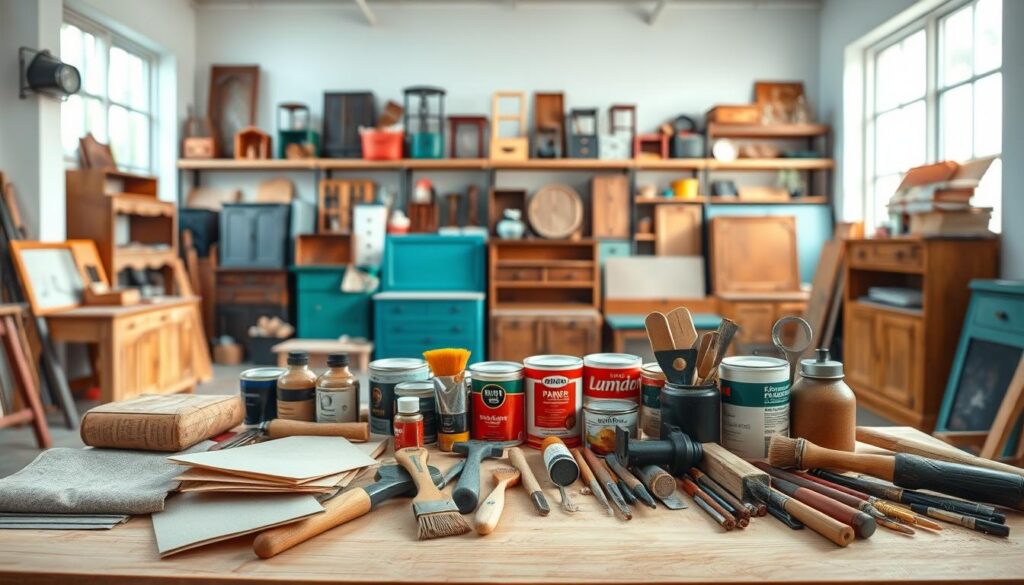
By equipping yourself with these essential tools and supplies, you’ll be well on your way to creating beautiful, unique pieces that showcase your creativity and skill.
Setting Up Your Workspace: Creating an Efficient Flipping Station
A well-organized workspace is the backbone of any furniture flipping project. To achieve success in DIY furniture flipping, it’s essential to create a dedicated space that fosters productivity and creativity.
Space Requirements and Considerations
When setting up your workspace, consider the size of the projects you’ll be working on. Ensure you have enough room to comfortably maneuver around your furniture pieces. A garage or a spacious basement can be ideal for larger projects.
Ventilation and Lighting Essentials
Proper ventilation is crucial when working with paints, stains, and other chemicals. Ensure your workspace has good airflow to prevent inhaling fumes. Additionally, adequate lighting is necessary for detailed work. Use a combination of overhead lighting and task lamps to illuminate your workspace.
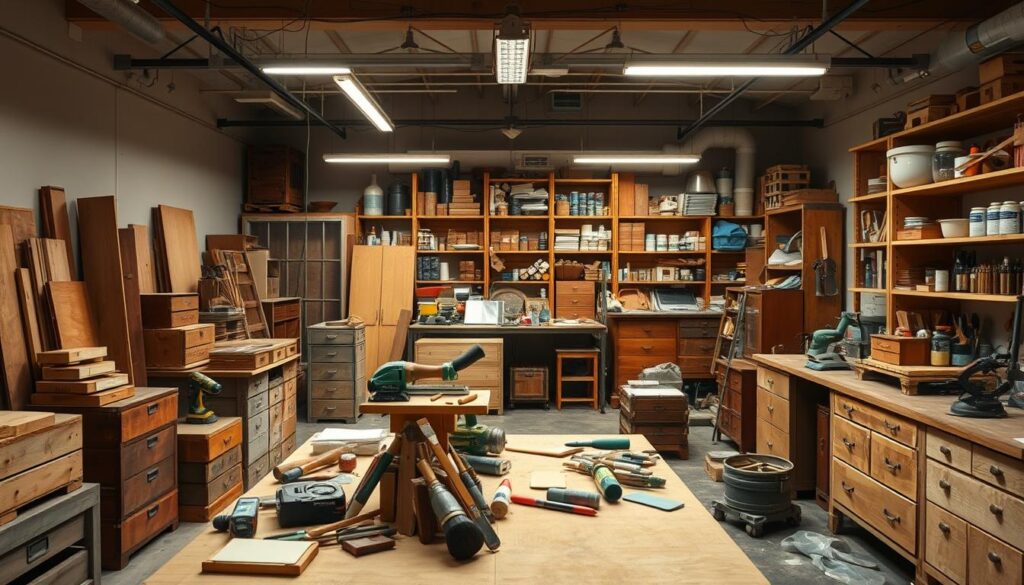
Organizing Your Supplies for Efficiency
Keep your tools and supplies organized using storage bins, shelves, and pegboards. This will not only save time but also reduce stress when working on projects. Consider labeling your storage to easily locate the materials you need.
Some essential supplies to keep organized include:
- Paints and stains
- Sanding tools
- Hardware and fixtures
- Safety equipment
By setting up an efficient workspace, you’ll be better equipped to tackle easy furniture flipping techniques and beginner furniture upcycling projects with confidence.
Finding Hidden Gems: Where to Source Furniture for Flipping
Furniture flipping begins with finding the right pieces, and there are numerous sources to explore. Whether you’re a seasoned flipper or just starting out, knowing where to look can make all the difference in your project’s success.
Thrift Stores and Secondhand Shops
Thrift stores and secondhand shops are treasure troves for furniture flippers. You can often find high-quality, solid wood pieces at a fraction of their original price. Keep an eye out for items that just need a little TLC to shine.
Estate Sales and Auctions
Estate sales and auctions can be excellent sources for unique, one-of-a-kind pieces. These events often feature furniture from estates or homes being cleared out, offering a mix of vintage and modern items.
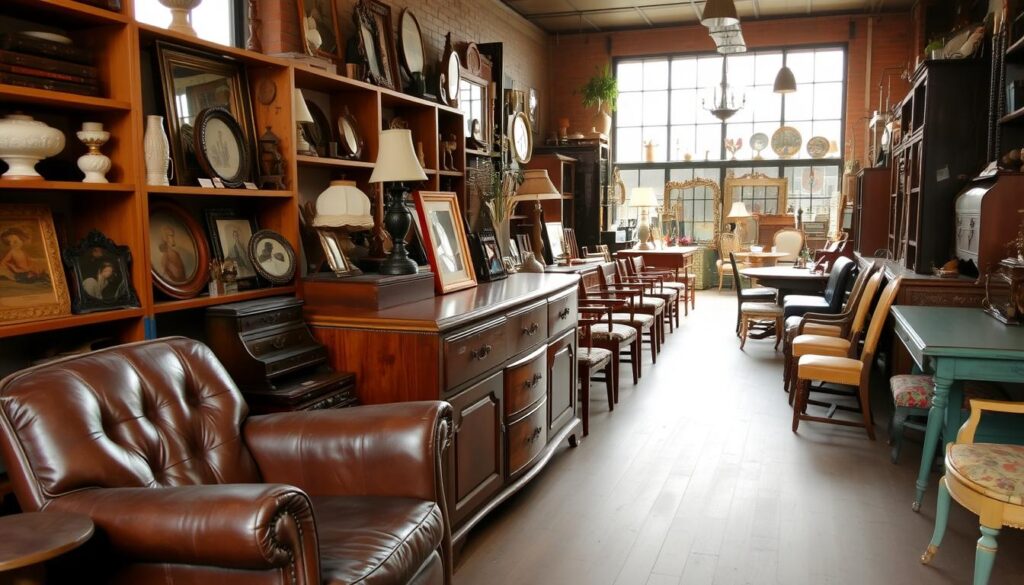
Online Marketplaces and Free Finds
Online marketplaces like Craigslist, Facebook Marketplace, and local online selling groups can be great resources. Additionally, keep an eye out for free furniture being given away on Freecycle or during community giveaways.
What to Look For and What to Avoid
When sourcing furniture, look for pieces made from solid wood, as they tend to be more durable and valuable. Avoid items made from MDF or other cheap materials that may not be worth the effort to flip.
| Source | Pros | Cons |
|---|---|---|
| Thrift Stores | Low prices, potential for hidden gems | Quality can be hit-or-miss |
| Estate Sales | Unique, one-of-a-kind pieces | Can be competitive, prices may be higher |
| Online Marketplaces | Convenient, wide selection | Be cautious of scams, quality varies |
By knowing where to look and what to look for, you can find great pieces to flip and turn a profit. Happy hunting!
Evaluating Furniture: What Makes a Good Flipping Candidate
The art of furniture flipping begins with identifying potential gems. Not every piece of furniture is worth flipping, and knowing how to evaluate a piece’s potential is crucial for success in beginner furniture refinishing and furniture restoration for beginners.
Assessing Structural Integrity
Before investing time and money into a piece, assess its structural integrity. Check for:
- Sturdy legs and a solid base
- Intact joints and minimal damage
- Functional drawers and doors
A piece with good structural integrity is more likely to be a worthwhile investment for beginner furniture upcycling.
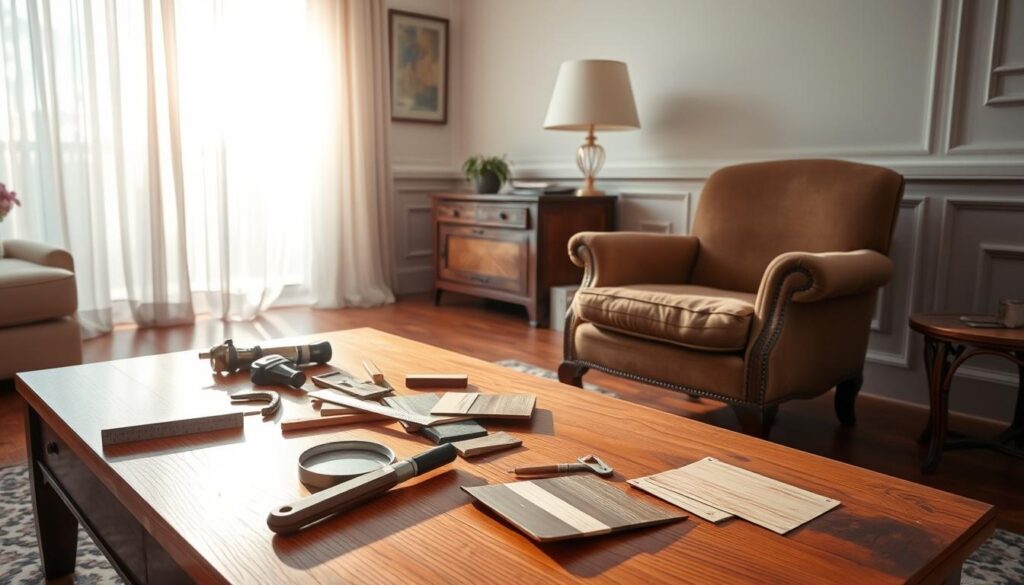
Identifying Quality Wood vs. Veneer
Understanding the difference between solid wood and veneer is vital. Solid wood can be sanded and refinished multiple times, making it more valuable for flipping. Veneer, on the other hand, has a thin layer of wood over a less expensive material and can be more challenging to work with.
Spotting Valuable Vintage Pieces
Vintage pieces can be highly valuable. Look for:
- Unique designs or craftsmanship
- Signatures or marks from known makers
- Condition and rarity
Identifying these characteristics can help you spot hidden gems.
Calculating Potential Profit Margins
To ensure profitability, calculate the potential profit margin by considering the purchase price, materials, and time invested. Research similar pieces online to estimate the selling price. A good rule of thumb is to aim for at least a 100% profit margin.
By carefully evaluating these factors, beginners can make informed decisions when selecting furniture for flipping, setting themselves up for success in the world of furniture restoration and upcycling.
Preparation Techniques: Setting the Foundation for Success
The preparation phase is where the magic begins in furniture flipping, setting the stage for a successful transformation. Before you can turn an old piece into something stunning, you need to get it ready for its makeover. This involves several key steps that are crucial for achieving professional-looking results.
Cleaning and Degreasing Old Furniture
Start by thoroughly cleaning the furniture to remove dirt, grime, and old wax. Use a gentle cleaner or sugar soap, as recommended by experts, to avoid damaging the surface. For tougher grime, a degreaser can be effective. Ensure you wear gloves and work in a well-ventilated area.
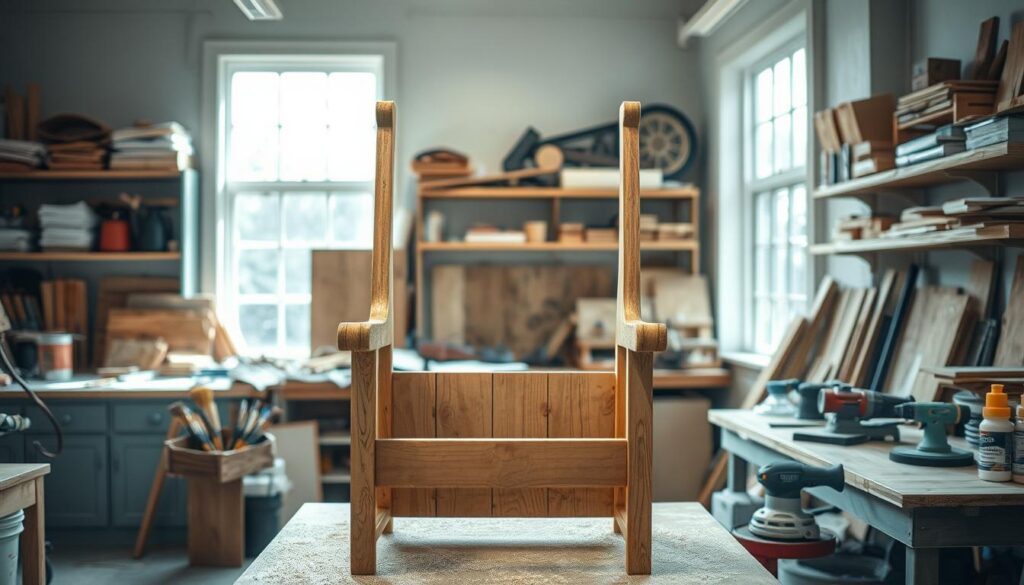
Repairing Damage and Filling Holes
Inspect the furniture for any damage, such as dents, scratches, or holes. Use wood filler to fill holes and let them dry completely before sanding them down. For scratches and dents, apply a suitable filler and sand it smooth. This step is crucial for creating a smooth surface for painting or staining.
Sanding Techniques for Different Materials
Sanding is a critical step that varies depending on the material. For wood, always sand in the direction of the grain to avoid scratches. Use progressively finer grits of sandpaper to achieve a smooth finish. For metal or plastic, use appropriate sanding tools and techniques to prepare the surface.
Priming: When and Why It’s Necessary
Priming is essential for ensuring that paint adheres well and lasts longer. It’s particularly important for surfaces that have been repaired or are made of a material that’s prone to staining, like wood with knots. Choose a primer that’s suitable for your furniture’s material and apply it according to the manufacturer’s instructions.
| Preparation Step | Purpose | Tips |
|---|---|---|
| Cleaning | Remove dirt and grime | Use sugar soap or gentle cleaner |
| Repairing | Fix damage and holes | Use wood filler and sand smooth |
| Sanding | Prepare surface for finish | Sand in the direction of the grain for wood |
| Priming | Ensure paint adhesion | Choose primer suitable for material |
By following these preparation techniques, you’ll be well on your way to creating beautiful, professional-looking pieces that showcase your easy furniture flipping techniques. Whether you’re a beginner or seasoned flipper, mastering these steps is key to beginner furniture upcycling success and learning how to flip furniture like a pro.
Transformation Methods: Popular Techniques for Stunning Results
To breathe new life into old furniture, you need to master various transformation techniques. Whether you’re a beginner or an experienced flipper, understanding the right methods can make all the difference in turning an old piece into a stunning work of art.
Painting Techniques for Different Styles
Painting is one of the most popular methods for transforming furniture. Different styles require different techniques. For instance, using chalk paint can give your furniture a vintage, distressed look.
Chalk Paint and Distressing
Chalk paint is a favorite among furniture flippers for its ease of use and versatility. To achieve a distressed look, apply chalk paint to the furniture, let it dry, and then sand off the paint in areas where wear and tear would naturally occur.
Milk Paint for an Authentic Look
Milk paint provides an authentic, matte finish that’s perfect for creating vintage or antique looks. It’s made from natural ingredients and can be layered to achieve different shades and textures.
Staining and Refinishing Wood
For pieces with quality wood, staining and refinishing can enhance the natural beauty of the material. Start by sanding down the existing finish, then apply a wood stain that complements the wood’s grain.
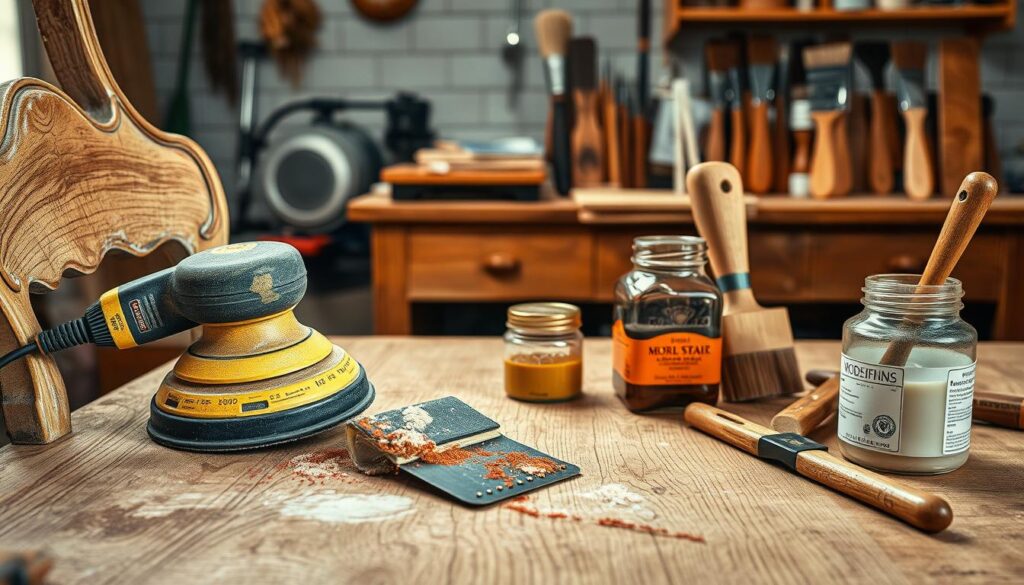
Decoupage and Decorative Finishes
Decoupage involves applying cut-out images or papers to the furniture and sealing them with a finish. This technique can add a unique, personalized touch to your pieces.
Sealing and Protecting Your Work
Once you’ve transformed your furniture, it’s crucial to seal and protect it. Use a clear coat of polyurethane or wax to safeguard against wear and tear, ensuring your hard work lasts for years to come.
| Technique | Description | Best For |
|---|---|---|
| Chalk Paint | Easy to apply, distressed finish | Vintage, shabby chic styles |
| Milk Paint | Natural ingredients, matte finish | Antique, rustic looks |
| Staining | Enhances natural wood grain | Wood furniture, modern styles |
| Decoupage | Personalized with cut-out images | Unique, eclectic pieces |
Hardware and Details: Elevating Your Flipped Pieces
In the world of furniture flipping, the little things – like hardware and decorative elements – can make a big impact. It’s the attention to these details that can elevate a piece from merely refurbished to truly unique.
Selecting the Right Hardware for Your Style
Choosing the right hardware is crucial as it can significantly affect the overall aesthetic of your flipped furniture. For a rustic look, consider using antique or vintage hardware. For a modern minimalist style, opt for sleek and simple designs.
Creative Knob and Pull Options
Don’t be afraid to get creative with your knob and pull choices. Unique options like crystal knobs or handmade ceramic pulls can add a touch of personality to your pieces. Consider repurposing items like old door handles or vintage drawer pulls for a one-of-a-kind look.
Adding Decorative Elements and Trim
Decorative elements and trim can further enhance the character of your flipped furniture. Use molding, carvings, or other decorative trim to add visual interest. For instance, adding a decorative trim around the edges of a dresser or table can give it a more polished look.
Before and After Documentation
Documenting your process from start to finish can be incredibly rewarding. Take before and after photos to showcase your work. This not only helps in tracking your progress but also serves as great content for marketing your flipped furniture.
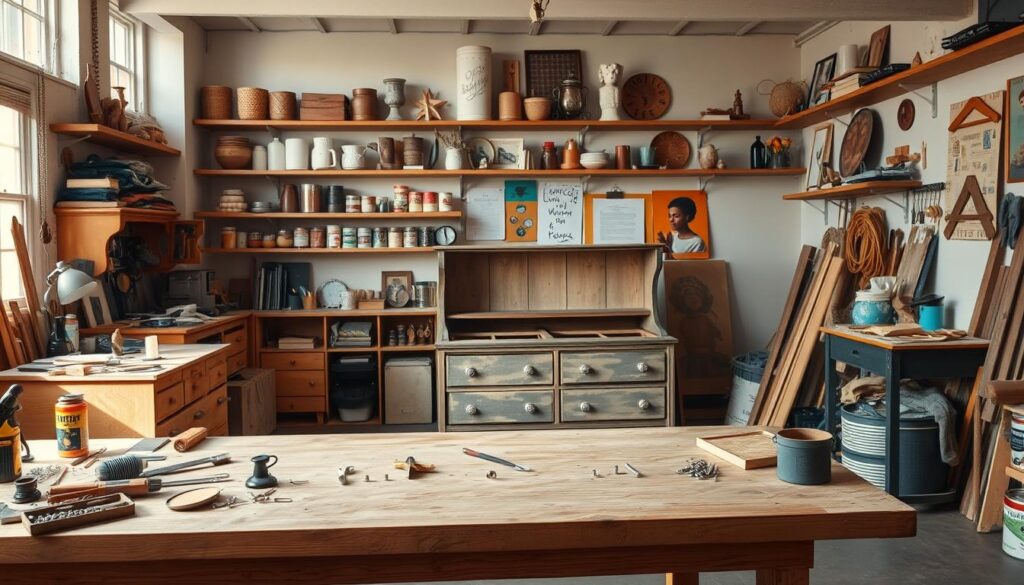
Marketing and Selling Your Flipped Furniture
To turn your furniture flipping hobby into a profitable venture, you need to master the art of marketing and sales. Effective marketing strategies will help you reach potential buyers and stand out in a competitive market.
Pricing Strategies for Beginners
Pricing your flipped furniture correctly is crucial. You need to consider the cost of materials, your time, and other expenses. According to Upcycle My Stuff, valuing your time is essential when pricing your work. Research similar items online to determine a competitive price range.
For example, if you spent $100 on materials and 10 hours of labor at $20 per hour, your total cost is $300. If similar pieces are selling for $500, you have a potential profit margin. Consider using pricing formulas or consulting with experienced flippers to refine your pricing strategy.
| Cost Component | Cost Amount |
|---|---|
| Materials | $100 |
| Labor (10 hours at $20/hour) | $200 |
| Total Cost | $300 |
Photography Tips for Showcasing Your Work
High-quality photos are essential for showcasing your flipped furniture. Good lighting and a clean background can make a significant difference. Consider using natural light or investing in a photography lighting kit.
Tips for great furniture photography:
- Use a tripod to avoid camera shake.
- Style the piece with complementary items.
- Edit your photos to enhance colors and brightness.
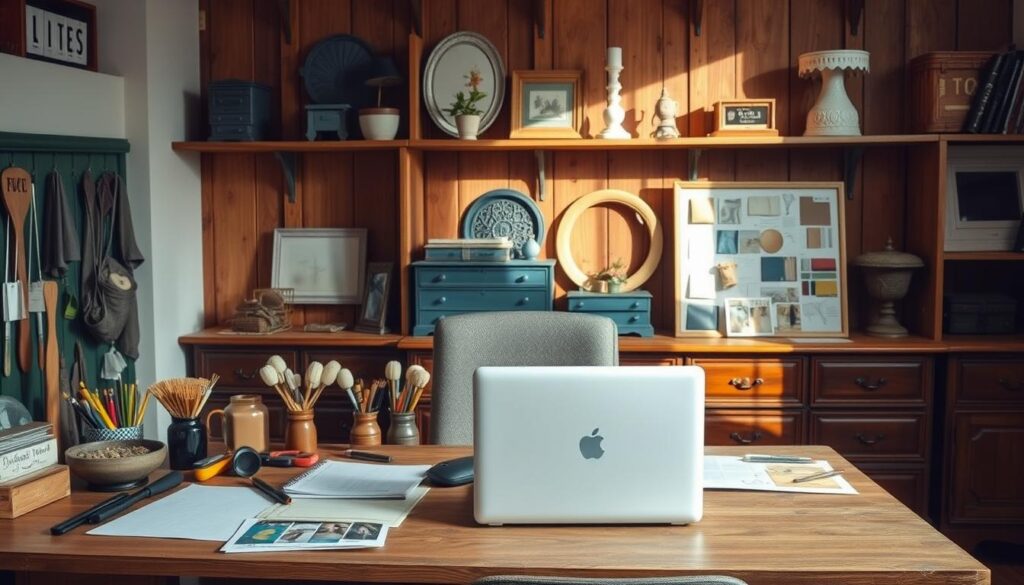
Online Platforms for Selling Furniture
There are several online platforms where you can sell your flipped furniture. Popular options include eBay, Craigslist, Facebook Marketplace, and specialized platforms like Chairish or Letgo. Each platform has its fees and guidelines, so choose the one that best fits your business model.
“The key to successful selling is not just about the price; it’s about presenting your product in the best possible way.” – Furniture Flipping Expert
Building Your Brand as a Furniture Flipper
Building a brand can help you establish a loyal customer base and differentiate yourself from competitors. Create a business name, logo, and consistent branding across your marketing materials. Utilize social media platforms to showcase your work and engage with potential customers.
By focusing on these areas, you can create a successful furniture flipping business that attracts customers and generates profits.
Conclusion: Embracing Your Furniture Flipping Journey
DIY furniture flipping for beginners is an exciting venture that combines creativity with profit potential. As you’ve learned, transforming old pieces into stunning new furniture requires patience, skill, and the right guidance.
By following the steps outlined in this flipping furniture guide, you’ll be well on your way to creating beautiful, functional pieces that can enhance any home. Whether you’re looking to supplement your income or simply enjoy a new hobby, beginner furniture flipping offers a world of possibilities.
As you embark on this journey, remember to stay focused on the essentials: sourcing quality materials, applying effective transformation techniques, and marketing your finished products. With practice and persistence, you’ll refine your skills and build a loyal customer base.
Now it’s time to get started. Gather your tools, scour local thrift stores, and begin transforming old furniture into treasures. The world of DIY furniture flipping awaits – dive in and discover the joy of creating something new from something old.



